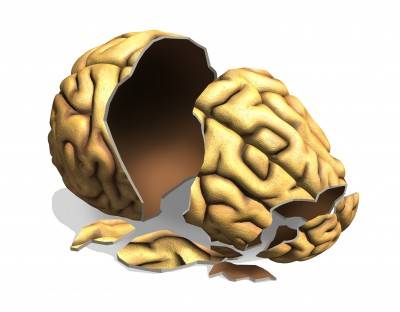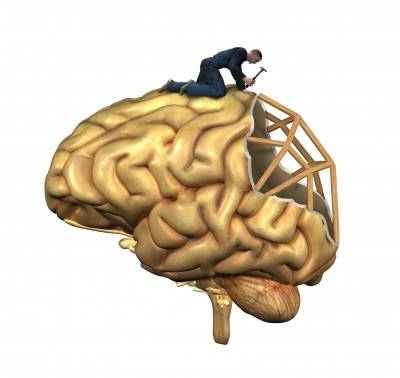 On March 29, 1998, Moyers on Addiction: Close to Home aired the second program in Bill Moyers' 5-part PBS documentary series on addiction. This second program, The Hijacked Brain, marked a turning point in public awareness of addiction as a brain disease. The scientific research supporting the view of addiction as a brain disease has been championed by two successive leaders of the National Institute on Drug Abuse, Drs. Alan Leshner and Nora Volkow, in what has without question been the largest financial investment in basic addiction research in history.
On March 29, 1998, Moyers on Addiction: Close to Home aired the second program in Bill Moyers' 5-part PBS documentary series on addiction. This second program, The Hijacked Brain, marked a turning point in public awareness of addiction as a brain disease. The scientific research supporting the view of addiction as a brain disease has been championed by two successive leaders of the National Institute on Drug Abuse, Drs. Alan Leshner and Nora Volkow, in what has without question been the largest financial investment in basic addiction research in history.
The view that addiction is in its essence a medical disorder is of course not new. However, locating the central mechanisms of addiction within a "drug-hijacked" brain and aggressively promulgating the addiction as brain disease paradigm to the public, policymakers and service professionals on such a massive scale is of recent historical import. As a result, discussions and debates about addiction over the past fifteen years have often been filled with streaming images of brains and brain slides.
As NIDA's addiction as brain disease proposition stirred debate and a minor backlash movement, individuals and families affected by addiction and an army of professional helpers and social control agents experienced rising optimism that research into addiction as a brain disease might open a world of possibilities. In this optimistic view, the national investment in unraveling the neurobiology of addiction would:
- Provide an unprecedented understanding of the mechanisms that initiate and sustainsevere and complex alcohol and other drug problems, including heuristic models of understanding for affected individuals and families
- Lead to the development of more effective tools for the screening, diagnosis and treatment of addiction, including more effective medications to support recovery initiation and maintenance
- Allow addiction professionals to effectively match new treatments to particular individuals and clinical subpopulations as well as identify populations for whom new and existing interventions are contraindicated (e.g., calculating the odds of help versus harm), and
- Decrease the social stigma attached to addiction, addiction treatment and addiction recovery.
The question I will raise here addresses the final of these possible outcomes via the question: Will portraying addictions as a genetically influenced chronic brain disease reduce stigma and discrimination by reducing the perception that addiction is primarily a problem of moral or character defect?
Like many addiction professionals, I have great hopes that future innovations in biomedical intervention will lead to more effective approaches to acute and sub-acute detoxification, recovery initiation and stabilization and recovery maintenance. But I must confess grave concerns regarding the effects of the brain disease paradigm on the stigma experienced by those directly affected by addiction and those in need of, seeking or in recovery. In an earlier paper, I suggested that what was missing in this constant onslaught of brain slides is the living reality of long-term recovery. If we are to suggest that the Dr. Jekyl/Mr. Hyde transformations within addiction are the product of a hijacked brain, then we have a responsibility to inform those affected, professional caregivers, the public and policymakers whether and when the hijacked brain can be rescued within a recovery process.
My fears are captured in the following three propositions. First, communicating the neuroscience of addiction without simultaneously communicating the neuroscience of recovery and the prevalence of long-term recovery will increase the stigma facing individuals and families experiencing severe alcohol and other drug problems. Second, the longer the neurobiology of addiction is communicated to the public without conveying the corresponding recovery science, the greater the burden of stigma will be. Third, the brain disease paradigm could create new obstacles for social inclusion of people in recovery and provide a rational for coercive, invasive and harmful interventions.
As I noted in my earlier paper, the vivid brain scans of the addicted person may make that person's behavior more understandable, but they do not make this person more desirable as a friend, lover, spouse, neighbor, employee, or candidate for college entrance, military enrollment, or a car or home loan. In fact, in the public's eye, there is a very short distance between the diseased brain and the perception of a deranged and dangerous person. We should not forget that less than a century ago biological models of addiction provided the policy rationale for prolonged sequestration of addicted persons, their inclusion in mandatory sterilization laws and a host of other harmful interventions, including prefrontal lobotomies and chem- and electroconvulsive "therapies." Further, christening addiction a CHRONIC brain disease without accompanying recovery messages, inadvertently risks further contributing to social stigma from a public that interprets "chronic" in terms of "forever and hopeless" ("once an addict, always an addict")(See Brown, 1998 for an extended discussion of this danger).
Conveying that persons addicted to alcohol and drugs have a brain disease that alters emotional affect, compromises judgment, impairs memory, inhibits one's capacity for new learning, and erodes behavioral impulse control are not communications likely to reduce the stigma attached to alcohol and other drug problems, UNLESS there are two companion communications: 1) With abstinence and proper care, addiction-induced brain impairments rapidly reverse themselves, and 2) millions of individuals have achieved complete long-term recovery from addiction and have gone on to experience healthy, meaningful, and productive lives. Conveying these latter statements may not be as important to changing stigma as personally knowing one or more people in long-term recovery who have achieved such success, but such statements would establish a social climate in which addiction recovery could flourish and recovered and recovering people would have access to the opportunities and relationships available to other citizens.
 While advances in understanding and treating addiction may well be the fruits of the addiction as brain disease paradigm, great care must be taken to prevent a new chapter of harm in the name of help--iatrogenic insults that have a long tradition in the history of addiction treatment. There is growing support from behavioral health research that contact strategies (increased interpersonal contact with recovering people and their stories) are far more effective in elevating optimism for recovery, reducing public stigma, and enhancing social inclusion than educational strategies that portray persons with behavioral health challenges as brain-diseased. Mobilizing a vanguard of recovering people who are living drug-free, productive lives to put public faces and voices on addiction recovery will do far more to decrease social stigma than another decade of brain slides and the constant media fixation on celebrities heading to rehab or dying. This month, more than 100,000 people in recovery will be marching in recovery celebration events across the United States. The images of their faces within crowds marching as far as the eyes can see will tell the other side of the addiction story--a story far different than that conveyed by brain slides.
While advances in understanding and treating addiction may well be the fruits of the addiction as brain disease paradigm, great care must be taken to prevent a new chapter of harm in the name of help--iatrogenic insults that have a long tradition in the history of addiction treatment. There is growing support from behavioral health research that contact strategies (increased interpersonal contact with recovering people and their stories) are far more effective in elevating optimism for recovery, reducing public stigma, and enhancing social inclusion than educational strategies that portray persons with behavioral health challenges as brain-diseased. Mobilizing a vanguard of recovering people who are living drug-free, productive lives to put public faces and voices on addiction recovery will do far more to decrease social stigma than another decade of brain slides and the constant media fixation on celebrities heading to rehab or dying. This month, more than 100,000 people in recovery will be marching in recovery celebration events across the United States. The images of their faces within crowds marching as far as the eyes can see will tell the other side of the addiction story--a story far different than that conveyed by brain slides.
For those interested in the modern history of the addiction brain disease paradigm, I would recommend articles by David Courtwright and Scott Vrecko.